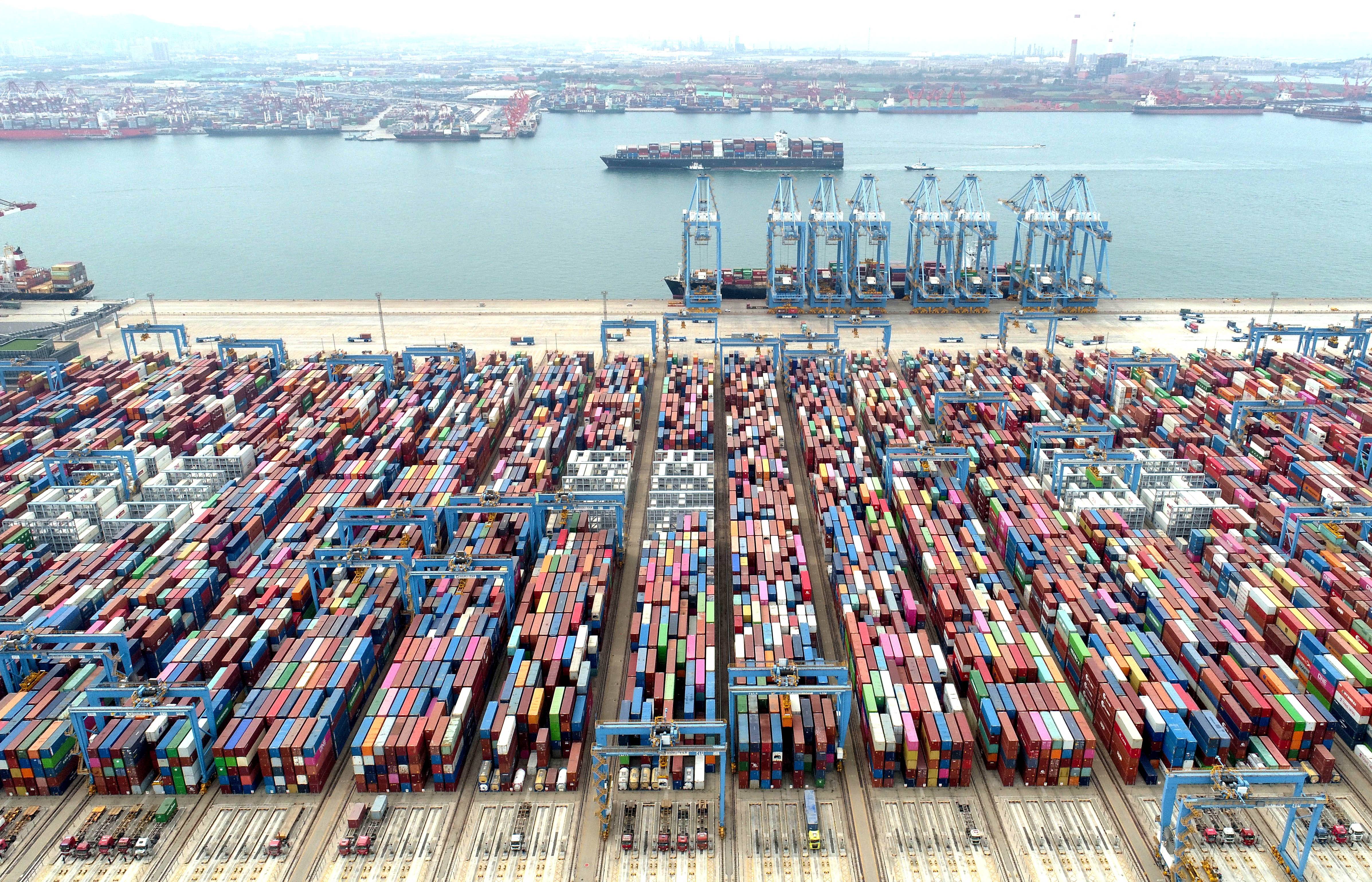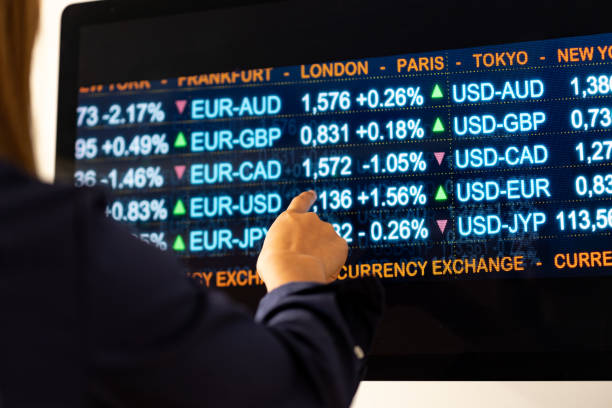China's imports unexpectedly grow as demand makes cautious comeback

An aerial view shows containers and cargo vessels at the Qingdao port in Shandong province, China May 9, 2022. Picture taken with a drone. China Daily via REUTERS/File Photo Acquire Licensing Rights
BEIJING, Nov 7 (Reuters) - China's imports unexpectedly grew in October while exports contracted at a quicker pace, in a mixed set of indicators that showed the world's second-largest economy facing persistent risks despite a recent improvement in domestic demand.
The trade figures follow a run of mostly upbeat data that showed Beijing's support measures have helped bolster a tentative comeback, although a protracted property crisis and soft global demand continue to dog policymakers heading into 2024.
Exports shrank 6.4% from a year earlier in October, customs data showed on Tuesday, faster than a 6.2% decline in September and worse than a 3.3% fall expected in a Reuters poll. Imports rose 3.0%, dashing forecasts for a 4.8% contraction and swinging from a 6.2% fall in September. Imports snapped 11 straight months of decline.
"The figures are in contrast to market expectations. The bad exports data may hit market confidence as we had expected the supply chain of exports to recover," said Zhou Hao, economist at Guotai Junan International.
"The significant improvement in imports may come from rising domestic demand, in particular a demand to replenish stocks."
UNEVEN RECOVERY
The yuan and Chinese stocks fell following the data, which reinforced markets' continued concerns about a fragile and uneven recovery.
China's official purchasing managers' index last week showed both new export and import orders shrank for an eighth consecutive month in October, suggesting manufacturers are struggling for buyers overseas and ordering fewer components.
"Since the global electronics market is on the rise, as affirmed by South Korea and Vietnam's export performance, China's poor export data points to weak demand in other categories, such as Christmas goods and garments," said Xu Tianchen, senior economist at the Economist Intelligence Unit.
"The positive surprise on imports seems to reflect a firming up in domestic demand, rather than deriving from distortions caused by the one-time bulk buying of commodities," he added.
China imported 13.52% more crude oil in October from a year earlier, a marginal increase on September's growth. Soybean imports jumped 25% from a year earlier, as the surge in cheap and plentiful shipments from Brazil continued.
Trade with China's major peers continued to contract, with exports to Southeast Asia, its largest trade partner, down 15.1%.
Trade with Australia was the exception amid improving relations between Beijing and Canberra, cooling diplomatic tensions that had arisen in recent years over a host of issues including national security and COVID. China has in recent months lowered trade barriers on Australian barley and wine exports.
Exports to Australia rose 5.9% in October while imports from the resource-rich nation climbed 12.0%.
China's higher imports narrowed the overall trade surplus to $56.53 billion in October from $77.71 billion in September, missing a forecast of $82.00 billion.
Analysts say it is too early to tell whether recent policy support will be enough to shore up domestic demand, with property, unemployment and weak household and business confidence threatening to undermine a sustainable rebound.
China's manufacturing activity unexpectedly contracted in October, data showed last week, complicating policymakers' efforts to revive growth.
"Measures of foreign orders hint at a more significant drop in foreign demand than what has so far been observed in the customs data," said Julian Evans-Pritchard, head of China Economics at Capital Economics.
"We expect most advanced economies to experience either mild recessions or weak GDP growth in the near-term, which will weigh on their demand for foreign goods."
Reporting by Joe Cash and Ellen Zhang. Editing by Sam Holmes
Our Standards: The Thomson Reuters Trust Principles.
How do futures traders review their trading?
Futures trading is a form of financial speculation that involves buying and selling contracts that represent the future delivery of an asset, such as a commodity, a currency, an index, or a stock. Futures traders aim to profit from the price movements of the underlying asset, without actually owning
Futures night trading hours
Futures are contracts that obligate the buyer or seller to exchange an asset or commodity at a specified future date and price. They are used for hedging, speculation, and arbitrage purposes in the global market. Futures can be based on various underlying assets, such as currencies, commodities, ind
How can futures efficiently increase the success rate of intraday trading?
Intraday trading is a form of trading that involves buying and selling securities within the same trading day, without holding any positions overnight. Intraday traders aim to profit from the short-term price fluctuations of the market, using various tools and strategies to analyze and execute trade
What are the factors that can affect how much money can be made in futures?
Futures trading is a form of financial speculation that involves buying and selling contracts that represent the future delivery of an asset, such as a commodity, a currency, an index, or a stock. Futures traders aim to profit from the price movements of the underlying asset, without actually owning








